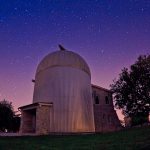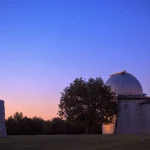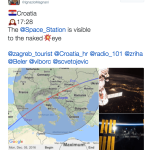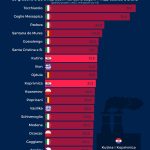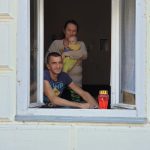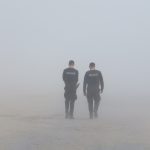The Višnjan Observatory, that is, the new observatory on Tičan hill, is the second most successful in detecting asteroids that could pose a threat to Earth, according to the recently published statistics by the Minor Planets Center of the International Astronomical Union, reports Dalmacija Danas on March 14, 2019.
Since the beginning of 2019, the Croatian team performed 54.5% of the work in monitoring the objects passing near the Earth that could pose a possible threat to it (Near Earth Objects – NEO). Thus, they are placed directly behind NASA, and in front of the US Army and the European Space Agency (ESA).
The Legend of Croatian astronomy Korado Korlević, one of the most prolific asteroid hunters, says that astronomers sometimes joke, calling them the “Wallmart of World Astronomy” in the sense that they have the best price ratios concerning the product. Namely, they spend the least when the work accomplished is taken into account, since they do not have any institutional funding.
“For example, the European Space Agency has two observatories in this business. They are six times worse than us,” Korlević explained.
In the last thirty years, the observatory network has developed around the world and generations of experts are being raised to detect and monitor objects that are dangerous to the Earth to foresee and thwart catastrophes such as the recent meteor in Chelyabinsk or the explosion in Tunguska in 1908.
So far, more than 19,000 objects that run as NEO are known, and this number increases each month by another two hundred discoveries. Yet, this job is still not near completion. American astronomers from Hawaii, Arizona, California and South America form the backbone of the network for detection and follow-up, while Višnjan has become increasingly prominent as their essential ally in Europe.
“Among the American asteroid hunters, the Višnjan Observatory is labeled with the codename ‘L01’. The Americans are not surprised by our success because there are plenty of scientists in their queues who spent part of their childhood in Višnjan. Also, L01 was third in the world in 2018,” according to Korlević.
The team has traditionally been in the top for years, but second place is extra special.
“Elemental disaster and ice rains on Hawaiian volcanoes blocked the observatory there, and unusually cloudy weather over the US deserts reduced the ability to track the sky from the beginning of this year. The observatory of the European and Japanese space agencies and the observatory of the Chinese Academy of Sciences and Arts took over 20% of the assistance, which is not enough to follow the bodies, or make sure you don’t lose them,” says Korlevic.
The secret of Višnjan’s success is thanks to two factors. To understand the first one, one should bear in mind that this is a project that sees many observatories around the world participate. Namely, after an observatory in Hawaii discovers a NEO, other observatories take over monitoring it. Otherwise, the object is lost.
“We are about 12 hours from Hawaii, and therefore we are almost in the ideal position to take over tracking the objects they discover. They will say – in this and that bush there could be a rabbit – and then we scrutinize the bushes. In the end, the International Astronomical Union announces that this combined work discovered the object,” explains Korlević.
But this is by no means the whole answer. Another, more important part of the secret of Višnjan’s success is the development of new methods that enabled the team to be top-notch with few resources. Korlević says that the usual recommendation is to follow the “best practice of others”, which is not the smartest.
“The best practice should be created. We started to work the way others do not work. We expect some of them to begin following us now, because this is the most effective, although it is challenging to work in such a way. We made improvements in several places, from optimizing observations to accepting that with a larger telescope, not every cloudy night is equally cloudy if infrared light is used,” Korlević and emphasizes that he has a great team of students and mentors who are capable of thinking innovatively.
To read more about lifestyle in Croatia, follow TCN’s dedicated page.


